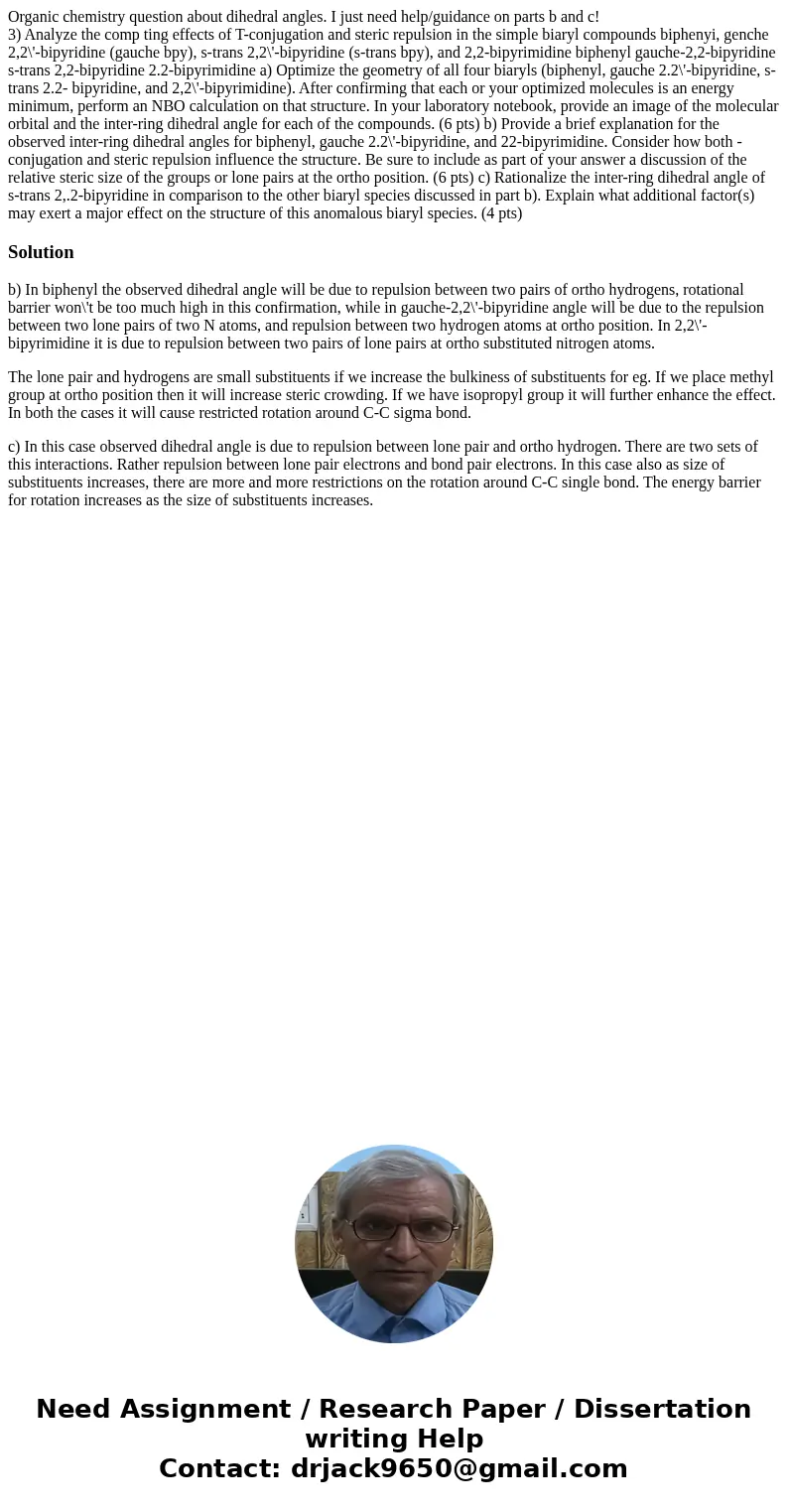Organic chemistry question about dihedral angles. I just need help/guidance on parts b and c!
3) Analyze the comp ting effects of T-conjugation and steric repulsion in the simple biaryl compounds biphenyi, genche 2,2\'-bipyridine (gauche bpy), s-trans 2,2\'-bipyridine (s-trans bpy), and 2,2-bipyrimidine biphenyl gauche-2,2-bipyridine s-trans 2,2-bipyridine 2.2-bipyrimidine a) Optimize the geometry of all four biaryls (biphenyl, gauche 2.2\'-bipyridine, s-trans 2.2- bipyridine, and 2,2\'-bipyrimidine). After confirming that each or your optimized molecules is an energy minimum, perform an NBO calculation on that structure. In your laboratory notebook, provide an image of the molecular orbital and the inter-ring dihedral angle for each of the compounds. (6 pts) b) Provide a brief explanation for the observed inter-ring dihedral angles for biphenyl, gauche 2.2\'-bipyridine, and 22-bipyrimidine. Consider how both -conjugation and steric repulsion influence the structure. Be sure to include as part of your answer a discussion of the relative steric size of the groups or lone pairs at the ortho position. (6 pts) c) Rationalize the inter-ring dihedral angle of s-trans 2,.2-bipyridine in comparison to the other biaryl species discussed in part b). Explain what additional factor(s) may exert a major effect on the structure of this anomalous biaryl species. (4 pts)
b) In biphenyl the observed dihedral angle will be due to repulsion between two pairs of ortho hydrogens, rotational barrier won\'t be too much high in this confirmation, while in gauche-2,2\'-bipyridine angle will be due to the repulsion between two lone pairs of two N atoms, and repulsion between two hydrogen atoms at ortho position. In 2,2\'- bipyrimidine it is due to repulsion between two pairs of lone pairs at ortho substituted nitrogen atoms.
The lone pair and hydrogens are small substituents if we increase the bulkiness of substituents for eg. If we place methyl group at ortho position then it will increase steric crowding. If we have isopropyl group it will further enhance the effect. In both the cases it will cause restricted rotation around C-C sigma bond.
c) In this case observed dihedral angle is due to repulsion between lone pair and ortho hydrogen. There are two sets of this interactions. Rather repulsion between lone pair electrons and bond pair electrons. In this case also as size of substituents increases, there are more and more restrictions on the rotation around C-C single bond. The energy barrier for rotation increases as the size of substituents increases.

 Homework Sourse
Homework Sourse